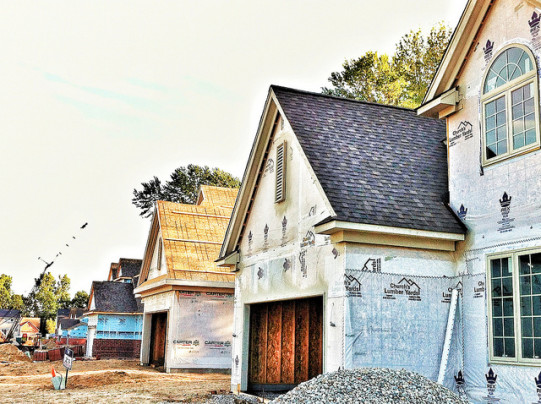A new survey shows that homeownership among millennials between the ages of 28 and 31 jumped from 27 percent to 47 percent in just two years. Additionally, ownership among people aged 32 to 36 was up 11 percent. That home buying has surged among younger Americans is an encouraging sign for the housing market – especially since homeownership levels haven’t yet fully recovered from the housing crash. But, like anything, there’s another side to the story. That’s because, increasing demand from first-time home buyers could also put pressure on home prices if available inventory can’t keep up with the level of interest. According to one projection, millennials will purchase 10 million homes over the next decade. Whether new home construction and existing supply can meet the demand from those buyers will be a key driver of the real estate market in the years to come. If supply continues to lag behind, home prices will keep rising, which will build equity among current homeowners but cause affordability issues. On the other hand, if supply increases, prices should moderate and lead to booming home sales. Either way, first-time home buyers will have a significant effect on housing market conditions in the coming years. More here.
Archive for December 2018
Number Of Homes For Sale Continues To Improve
When shopping for something, having more to choose from is generally a good thing. And, when the thing you’re shopping for is a house, that’s especially true. That’s because, in addition to giving buyers options, more homes for sale typically helps keep prices in check. When there are enough homes to meet demand from interested buyers, prices moderate. But, over the past few years, available inventory has been lower than normal in most markets. In fact, last year at this time, inventory was down 9.1 percent on an annual basis. Because of this, home values have been increasing. That may be starting to change, however. According to new data, the number of homes for sale has now increased year-over-year for three consecutive months. And, though the most recent improvement was only 0.4 percent, it’s still a good sign for buyers. After all, if inventory continues to gain, even small increases could help lead to more favorable affordability conditions. More here.
Are More Renters Becoming Homeowners?
Paying rent each month can make it difficult to save money for a down payment. But, according to new research, renters who hope to one day buy a home may be finding it a little bit easier. That’s because, though rent is up about 3 percent from last year, it isn’t increasing quite as rapidly as it was before. And there may be evidence that the slowdown is helping aspiring home buyers save money to buy a house – especially millennials, who make up half of all renters. For one, the number of renters is falling. In fact, there were 43.2 million renter households across the country in 2018, which is about 100,000 fewer than in 2017. Combine that with the fact that millennials are currently buying more homes than any other generation, and it appears slower rent appreciation may be helping more renters make the leap to homeownership. Of course, the rate of rent increases isn’t the same across all markets. For example, while the New York metro area has seen rent rise just 1 percent over the past year, in Las Vegas rent is up 6.5 percent year-over-year. Still, if the overall trend holds, conditions may be getting easier for renters who hope to buy a home in the near future. More here.
Homes Stayed On The Market Longer In November
The real estate market is typically slower in the fall and winter. So, it’s not that surprising to see homes for sale are staying on the market longer than they were a few months ago. But according to the National Association of Realtors’ most recent existing home sales report, not only was the typical listing on the market for 42 days in November, home price increases are beginning to moderate as well. In other words, the market’s slowed down and it’s good news for potential home buyers. The report shows buyers have already begun to take notice. Sales of previously owned homes were up nearly 2 percent in November and it was the second consecutive month of gains. “The market conditions in November were mixed, with good signs of stabilizing home sales compared to recent months, though down significantly from one year ago,” Lawrence Yun, NAR’s chief economist, said. “Rising inventory is clearly taming home price appreciation.” In short, the balance between available homes and the number of interested buyers is beginning to even out, which is leading to more favorable conditions. If the trend continues, better prices and more choices will make the winter housing market a good deal for house shoppers. More here.
Average Mortgage Rates Fall To 3-Month Low
According to the Mortgage Bankers Association’s Weekly Applications Survey, average mortgage rates fell last week across all loan categories, including 30-year fixed-rate loans with both conforming and jumbo balances, loans backed by the Federal Housing Administration, and 15-year fixed-rate mortgages. The decline brought rates to their lowest level since September and continued a trend downward that began last month. But though rates dropped, demand for mortgage applications did as well. Joel Kan, MBA’s associate vice president of economic and industry forecasting, says economic uncertainty outweighed the effects of favorable mortgage rates. “Despite mortgage rates falling across the board last week to their lowest levels in three months, mortgage applications also declined, as more potential borrowers likely stayed away because of ongoing financial market volatility and economic uncertainty,” Kan said. Demand for loans to buy homes remained above last year’s levels, however. In fact, purchase loan activity was up 2 percent from where it was at the same time last year. The MBA’s weekly survey has been conducted since 1990 and covers 75 percent of all retail residential mortgage applications. More here.
Is The Housing Market Positioned To Take Off?
The end of the year is typically the time when experts and prognosticators make predictions for the year ahead. And while it’s not easy to see into the future, year-end forecasts can give us an idea of which scenarios are likely to play out. Take Fannie Mae’s most recent forecast from their Economic and Strategic Research Group. Its experts say economic growth will begin to slow in 2019 but the real estate market may actually be well positioned. And that could be good news for home buyers. Doug Duncan, Fannie Mae’s chief economist, says mortgage rates and home sales will stabilize next year. “We maintain our call that the Fed will hike rates once more in December and two more times in 2019, despite rising market expectations of fewer hikes amid stock market volatility,” Duncan said. “If mortgage rates trend sideways next year, as we anticipate, and home price appreciation continues to moderate, improving affordability should breath some life into the housing market.” In other words, though conditions may still be challenging, home buyers should see a calmer market next year and the beginning of some relief. More here.
Builders Report Increase In Affordability Concerns
In some ways, builders are good predictors of where the housing market is headed. Since their business is dependent on knowing whether or not consumers are interested in buying homes, they are among the first to see changes in buyer traffic and interest. Because of this, the National Association of Home Builders tracks builder confidence as part of their monthly Housing Market Index. In December, the index fell to 56 on a scale where any number above 50 indicates more builders view conditions as good than poor. And, while that means builders still see market conditions as favorable, the four-point decline is an indication that builders are seeing some changes in buyers’ attitudes. Robert Dietz, NAHB’s chief economist, says the issue is affordability. “The fact that builder confidence dropped significantly in areas of the country with high home prices shows how the growing housing affordability crisis is hurting the market,” Dietz said. “This housing slowdown is an early indicator of economic softening, and it is important that builders manage supply-side costs to keep home prices competitive for buyers at different price points.” More here.







